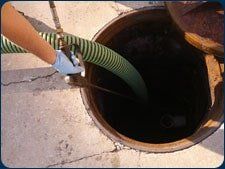Reliable Grease Trap Cleaning, Pumping near Orlando, FL

We keep your business free-flowing and in compliance!
Most municipality regulations require you to have your grease trap or grease interceptor pumped at least every 90 days. Let Total Enviro Serviceskeep your restaurant in compliance with these regulations so you can concentrate on running your business.
The purpose and use of a grease trap (or grease interceptor) is to stop grease and food waste from entering the sewer system, which can cause clogs. This is done by capturing the waste deposited into the drain, the liquid effluent, in the separation basin. The effluent in the trap (from the drains) cools the grease to room temperature, solidifying it. Grease is lighter than water, so it floats to the top and is trapped. Foods and solids, which are heavier than water, settle at the bottom.
Complete Grease Trap Sales, Service & Repair
Total Enviro Services is well equipped to pump out any grease trap or interceptor. We are also able to install, replace or repair failing systems to keep your business free-flowing. We provide environmentally-friendly solutions to your drainage needs as well – just ask your service technician about Total Drain Treatment (TDT), an all-natural and non-toxic drain additive that helps to clear drain lines and seed your grease trap without harsh chemicals.If your system is not running up to code, or if you have blockages in your line, we are here to provide you with the experience and service you need to keep your system in compliance and running smoothly. We also offer convenient routine maintenance contracts to ensure that your restaurant or place of business stays up to code and on schedule, as well as prevent costly back-ups or service downtime.

Grease Trap FAQ
A grease trap is a device for the grease/oils/fats that go down the drain; it is required in restaurants and other places where grease is used daily. Grease traps work by catching the grease and trapping it in the tank so it doesn't flow into the main waste water system.
Grease interceptors are usually smaller versions of the grease traps outside, and are usually located inside.
It depends on the amount of grease that is used per day and the volume of water used. Check your local municipality for specific details. If there is no municipal grease program, we recommend pumping it every three months.
You need to pump out your grease trap because grease will solidify and can stop your business from having flowing water, stopping the flow of your system. Depending on the violation, you can also be cited by your municipality.
If you don't pump the grease out of your grease trap, it can solidify and become unable to pump, stopping up the business or residence. Breaking down the solids is more costly than a regular, scheduled pump out. This is also a wastewater division code violation, depending on your municipality.
Call Total Enviro Services Inc. dba: Total Septic Service today at (407) 841-0400 and let our experts Commercial Septic & Drain Services!

